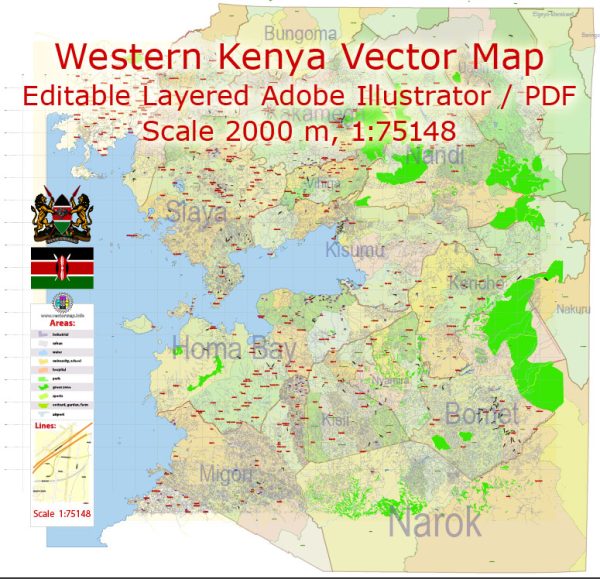The western part of Kenya is a diverse and culturally rich region that encompasses a variety of geographical features, including highlands, lowlands, and the eastern shores of Lake Victoria. Here are some key geographical characteristics of the western part of Kenya:
- Lake Victoria: Lake Victoria, one of the largest freshwater lakes in the world, forms the western border of Kenya. The lake’s shores in Kenya are home to several towns and cities, including Kisumu, Homa Bay, and Kendu Bay. Lake Victoria not only plays a vital role in the region’s economy but also offers opportunities for fishing, transportation, and tourism.
- Highlands and Plateaus: The western part of Kenya includes several highlands and plateaus. These areas are characterized by rolling hills, fertile soils, and a moderate climate. The most prominent highland region is the Nandi Hills, which is known for its tea and coffee farming.
- Great Rift Valley: The western part of Kenya is on the eastern side of the Great Rift Valley, which is a tectonic feature that extends across Africa. While the Rift Valley itself is more pronounced in the western part of the country, its geological influence is felt throughout Kenya. The western Rift Valley includes areas like Kericho and Bomet, known for their tea plantations.
- Lakes and Rivers: In addition to Lake Victoria, the region is dotted with other smaller lakes, such as Lake Baringo and Lake Bogoria. Numerous rivers, including the Nzoia, Yala, and Sondu Miriu, flow through the western part of Kenya. These water bodies are vital for agriculture, transportation, and biodiversity.
- Rainforest: The Kakamega Forest, often referred to as the “Last Remnant of the Guineo-Congolian Rainforest,” is located in the western part of Kenya. This tropical rainforest is a unique and biologically diverse area, making it an important conservation site.
- Mount Elgon: Mount Elgon, an extinct volcano, is situated on the border between Kenya and Uganda. While the mountain’s highest peak is in Uganda, its lower slopes and foothills are found in the western region of Kenya. It offers opportunities for hiking and exploring its unique flora and fauna.
- Agricultural Heartland: The western part of Kenya is known as one of the country’s main agricultural regions. The fertile land in the highlands and lowlands supports the cultivation of crops such as maize, sugarcane, tea, coffee, and various horticultural products.
- Cultural Diversity: The western region of Kenya is home to diverse ethnic groups, including the Luo, Luhya, Kisii, and Kuria, each with its own unique customs and traditions. This cultural diversity has a significant influence on the region’s way of life, including agriculture, cuisine, and music.
Overall, the western part of Kenya is a region of geographical and cultural significance, offering a mix of natural beauty, agricultural productivity, and a rich cultural tapestry.


 Author: Kirill Shrayber, Ph.D.
Author: Kirill Shrayber, Ph.D.